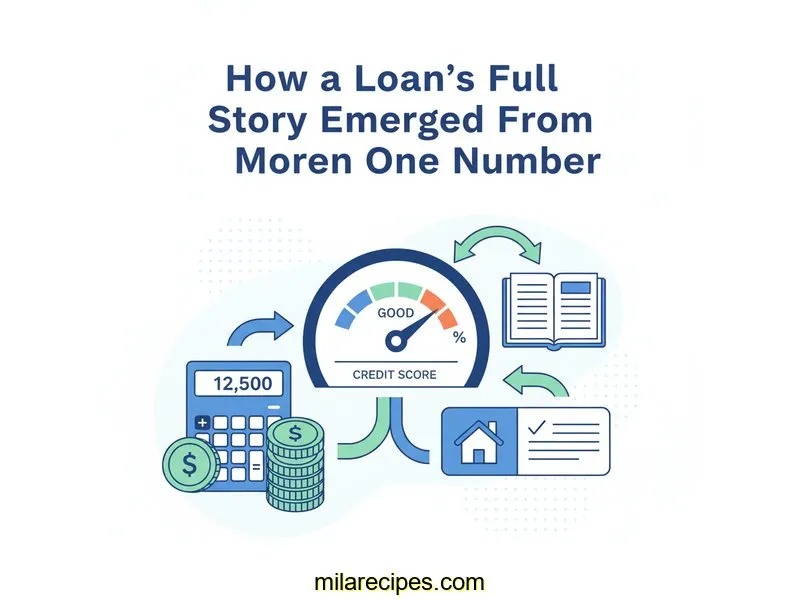
Auto Loan Calculator
Calculate payments over the life of your Loan
Home Blog Privacy Terms About Contact
Calculate payments over the life of your Loan
Home Blog Privacy Terms About ContactPublished on October 26, 2025

It all began with a simple conversation. A friend mentioned their new monthly payment for a recent loan, and the number seemed surprisingly low. I was genuinely happy for them, but a part of my brain, the part that loves patterns and puzzles, got stuck. The loan amount they mentioned was similar to one I had been researching for a project, yet their payment was significantly smaller. How could that be? Was there some secret I was missing?
My initial thought was that they must have secured an incredibly low interest rate. But when they told me the rate, it was quite standard. The math just didn't seem to line up in my head. This wasn't about wanting a loan or trying to find a better deal; it was a genuine, nagging curiosity about the mechanics of the numbers themselves. How can two loans for roughly the same amount have such different monthly outputs? What lever was I not seeing?
This led me down a path of exploring online loan calculators, not as a shopper, but as a student. My goal was simple: I wanted to understand the relationship between the numbers. I wanted to see the formula at work, to understand how adjusting one input created a ripple through all the others. I wasn't looking for financial guidance; I was searching for mathematical clarity. This is my journey into making sense of those numbers. Please remember, this is about understanding how calculations work, not financial advice.
I started plugging in numbers, playing with different scenarios. But instead of clarity, I initially found more confusion. The calculators were spitting out answers, but I didn't understand the "why" behind them. I felt like I was watching a magic trick without knowing the secret, and I was determined to pull back the curtain and see how it was done.
My first attempts to solve this puzzle were a lesson in tunnel vision. I was so fixated on the monthly payment amount that I couldn't see anything else. In my mind, the lowest monthly payment was the undeniable winner. It seemed so logical, so straightforward. To test this, I decided to create a controlled experiment using a standard online loan calculator.
I set up two hypothetical scenarios based on the conversation that started it all. Both scenarios would use the exact same loan amount and interest rate. The only variable I would alter was the loan term, or the length of time to repay it. I wanted to replicate the situation and see the numbers for myself.
Scenario A (The "Friend's" Loan):
Scenario B (My Comparison):
I stared at those two numbers—$300.95 and $414.24—and my confusion grew. The calculator was also showing other outputs, fields like "Total Principal Paid" and "Total Interest Paid," but I had been ignoring them. My eyes were glued to the monthly payment. I was so focused on that one piece of data that I failed to see the much larger story the calculator was trying to tell me.
The frustration was building. I ran the calculations again, convinced I must have made a mistake. But the results were the same. The 72-month term had the lower payment. The 48-month term had the higher one. My simplistic view told me the case was closed. But my curiosity kept pushing, telling me there had to be more to it.
That's when my eyes finally drifted away from the big, bold "Monthly Payment" result and landed on a smaller, less prominent field: "Total Interest Paid." I had glanced past it a dozen times, dismissing it as secondary information. In that moment, I decided to pay attention to it. I looked at the Total Interest for Scenario A, the one with the low monthly payment. The number was $4,818.40. Then I looked at the same field for Scenario B, the one with the higher payment. The Total Interest was $3,033.52.
It was a genuine shock. My brain did a full stop. The loan with the lower monthly payment resulted in me handing over an extra $1,784.88 in interest. It was the complete opposite of what my intuition had been telling me. The "better" option, based on my narrow focus, was actually the one with a substantially higher overall price tag. This was the missing piece of the puzzle. The story wasn't just about the monthly payment; it was about the total journey. This realization fundamentally shifted how I viewed loan mathematics.
My new understanding was that the loan term acts like a lever. Pushing the lever one way (increasing the term) makes the monthly weight feel lighter, but it simultaneously pushes the total interest upward. Pushing it the other way (decreasing the term) makes the monthly weight feel heavier, but it brings the total interest down.
The core concept I had missed was that interest is calculated on the remaining balance over time. With a 72-month term, the principal balance shrinks much more slowly than with a 48-month term. This means there's a higher balance for a longer period, giving the 7.2% interest rate more to "feed on" each month, for more months. It wasn't just 24 extra payments; it was 24 extra periods for interest to generate.
To really solidify this, I ran one more test—a middle ground. I used the same $16,850 loan at 7.2% but set the term to 60 months. The calculator showed a monthly payment of $335.04 and total interest of $3,252.40. The numbers fell perfectly between my first two scenarios. This confirmed the pattern and proved my new understanding was correct. The relationship between term, monthly payment, and total interest was clear and predictable.
This journey, which started with a simple question about a friend's payment, taught me so much about the narrative of numbers. I went from a state of confusion to one of clarity by learning to read the whole story, not just the headline. Here are the key lessons I took away about the calculations themselves:
Calculators are impartial tools designed to show the mathematical output of your inputs. They don't make judgments about what is "better." One person's primary need might be a low monthly payment to fit a tight budget, while another's might be the lowest overall price. The tool simply presents the full mathematical reality, allowing you to see the consequences of different scenarios.
Interest is typically calculated on the outstanding principal balance each period. A longer term means your principal balance decreases more slowly. For example, after 12 months on my 48-month scenario, the balance would be lower than after 12 months on the 72-month scenario. Since you are paying interest on a higher balance for a longer time, the total interest accumulates to a much larger sum.
Based on my learning journey, the two most revealing numbers are the monthly payment and the total interest paid. The first tells you about the loan's impact on your monthly cash flow. The second tells you the overall price you are paying for the loan. Looking at them together provides a much more complete picture than focusing on either one alone.
The best way I found is to do what I did: run multiple scenarios. Keep the loan amount and interest rate the same, but input different loan terms (e.g., 36, 48, 60, and 72 months). Create a simple table or just write down the resulting monthly payment and total interest for each. This will give you a clear, visual representation of the trade-off in action.

My quest to understand a simple discrepancy between two monthly payments taught me an invaluable lesson: financial calculations tell a story, and you have to read every page to understand it. I had been fixated on the most obvious number—the monthly payment—while the more profound part of the narrative was waiting in another field entirely. My "aha moment" with the "Total Interest Paid" field was a reminder that context is everything.
The numbers on a loan calculator aren't just digits; they represent a relationship between time, money, and mathematics. Learning to see how they influence each other has made me feel much more capable of understanding the mechanics of finance. It's not about finding the "right" answer, but about understanding what the different answers truly mean.
I hope sharing my personal exploration encourages you to get curious, too. Play with the calculators, change the variables, and see what stories the numbers tell you. Building this kind of literacy is empowering. This article is about understanding calculations and using tools. For financial decisions, always consult a qualified financial professional.
Disclaimer: This article documents my personal journey learning about loan calculations and how to use financial calculators. This is educational content about understanding math and using tools—not financial advice. Actual loan terms, rates, and costs vary based on individual circumstances, creditworthiness, and lender policies. Calculator results are estimates for educational purposes. Always verify calculations with your lender and consult a qualified financial advisor before making any financial decisions.
